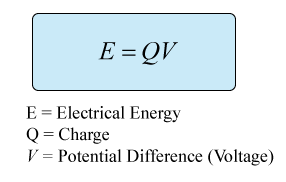I sent DontTalk (who used to be our likely most mathematically knowledgeable staff member) a message asking him to analyse this.
He was kind enough to take the time to do so.
Here is his reply:
I have no definite answer for the problem either. A lot of really complicated things are involved, like for example the fact that the lightning we see is actually the glowing air as it's heated up and that follows rules of plasma science I have no idea about.
I can make some guesses on the issue, but that's all. So take anything I write here with a grain of salt.
First the thread already linked to this page, which is a good place to start.
https://en.wikipedia.org/wiki/Speed_of_electricity
Now drift velocity is probably not which you want to use here. As that article mentions drift velocity of electrons in a wire is something in the millimeter per hour.
Using it would imply that if one holds a wire and someone lets electricity flow through it one would be absolutely fine for days, until the electricity does one damage.
Instead the value interesting would be the speed at which the energy flows through the cable. That energy is what makes the damage after all.
As the pages states the energy is transmitted through electromagnetical waves. Such waves, as the article states, are very fast with 50%-99% of the speed of light. The transmition to air is even noted to be particularly fast and judging by its refractive index I would guess around 99% the speed of light.
https://en.wikipedia.org/wiki/Refractive_index
Now we at first have a problem: Doesn't our article from harvard state lightning is only 440000 m/s fast on average? That is much less than 99% of the speed of light.
Now what they in detail found is "The average speed of the leader tip". The word "average" is important here. As it turns out lightning doesn't flow at one constant speed, but while a lightning strikes it changes the speed constantly.
Look at this page of the NOAA.
http://www.srh.noaa.gov/jetstream/lightning/lightning_max.html
"Between each step there is a pause of about 50 microseconds, during which the stepped leader "looks" around for an object to strike. If none is "seen", it takes another step, and repeats the process until it "finds" a target."
"Studies of individual strikes have shown that a single leader can be comprised of more than 10,000 steps!"
Essentially a lightning takes a lot of very short breaks while moving. This breaks are so short and under circumstances so many that one wouldn't be able to see any of them usually. For us it would just look as if the lightning is moving at a continuous speed.
Given that my guess on why the theoretical close to lightspeed energy transmission of lightning (which I would assume coincides with the visible lightning speed, albeit the visible phenomenon likely lacks behind by some amount due to the time necessary to heat up the air) is in practice only on average 440000 m/s is that the movement with close to lightspeed and the breaks average out to just about 440000 m/s.
So with that is my guess on why lightning is as fast as it is. What does that mean for electricity now?
Well, for electricity flowing through air (and possibly other insulating materials) I would assume that its speed it determined through the same close to lightspeed with breaks average. In that case what determines the speed in the end would be how many breaks there are and how long this breaks are.
For that one really has to know what even causes them in the first place, which isn't mentioned. My personal guess is that after a step the potential difference drops a bit and the lightning needs a bit to build it up to the point of reaching the breakdown voltage of the next step again. That is only an unintellectual guess, though.
https://en.wikipedia.org/wiki/Breakdown_voltage
If we were to assume something in that direction, though, the main factor for electricity through air to reach lightning speed would be to have a comparable or higher voltage which would be 100 million to 1 billion volt.
Since for electricity Power = Voltage * Amperage, one can probably do a generous approximation by saying that electricity, that in power is comparable to real lightning, can be assumed to flow equally fast through air.
I assume for electricity in conductors the velocity factor gives that correct value.
https://en.wikipedia.org/wiki/Velocity_factor#Typical_velocity_factors
So this is my hypothesis on the matter at hand. As said, take it with a grain of salt.
In any case I think electricity flowing through air that has similar power to lightning (and fulfills the general requirements in regards to realistic lightning) should have properties similar enough to lightning to have the lightning speed value applied to it, however it works in detail. Whether or not the source is a cloud shouldn't be what makes the difference after all.
So essentially I agree with the conclusions you guys seemed to have reached, albeit due to different reasoning.
Or was it specifically the writing of some rule that you wanted help with? In that case I would simply suggest adding "Additionally, since lightning speed could change depending in various factors, it is required to show that the electricity carries an energy of around 5 billion joules or more, or has a voltage of around 100 million volt or more" to the second bullet point of the "What is a real Lightning?" section on the lightning dodging feats page.
The 5 billion and 100 million volt figures come from here:
https://en.wikipedia.org/wiki/Harvesting_lightning_energy
http://www.srh.noaa.gov/jetstream/lightning/positive.html
